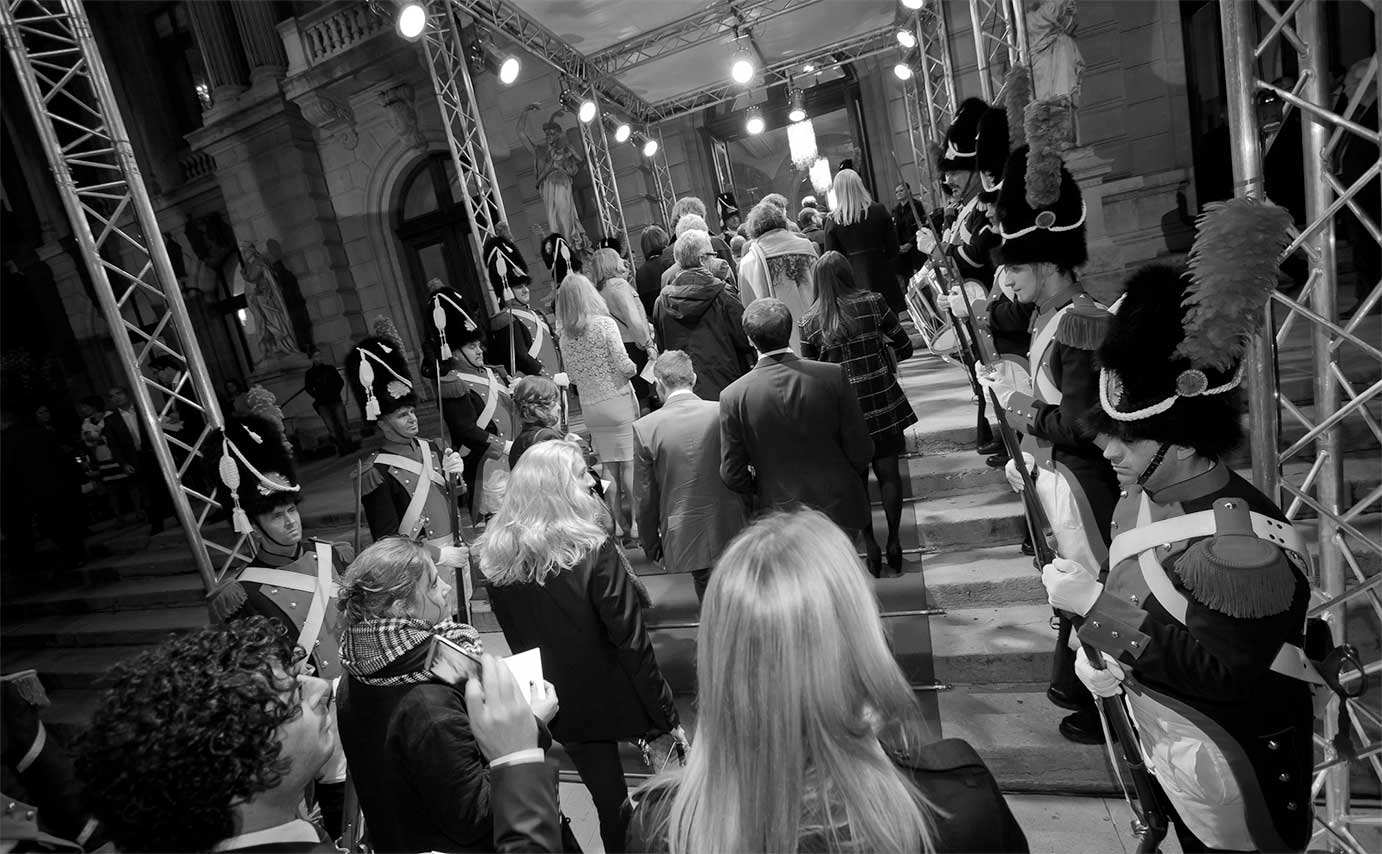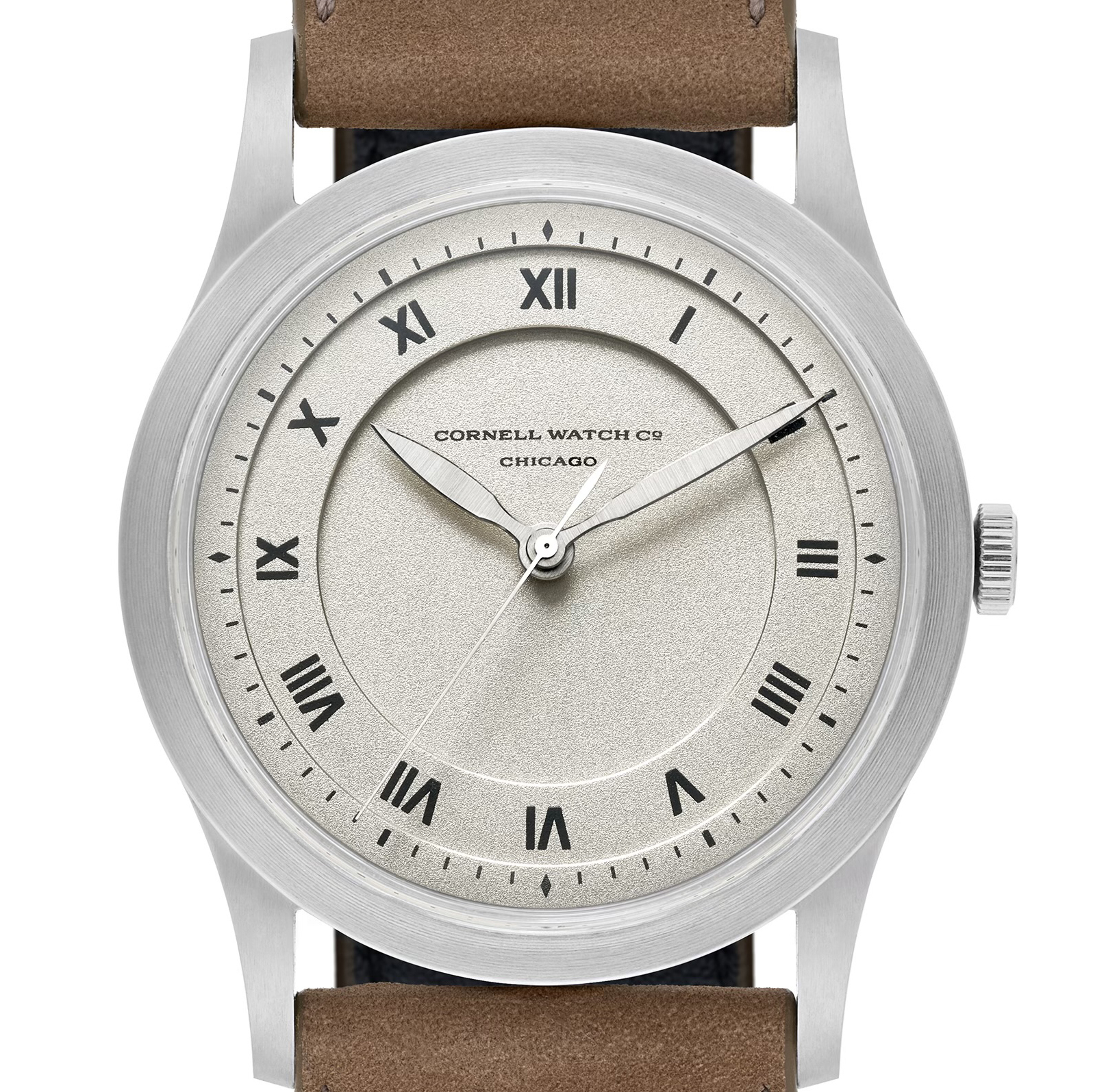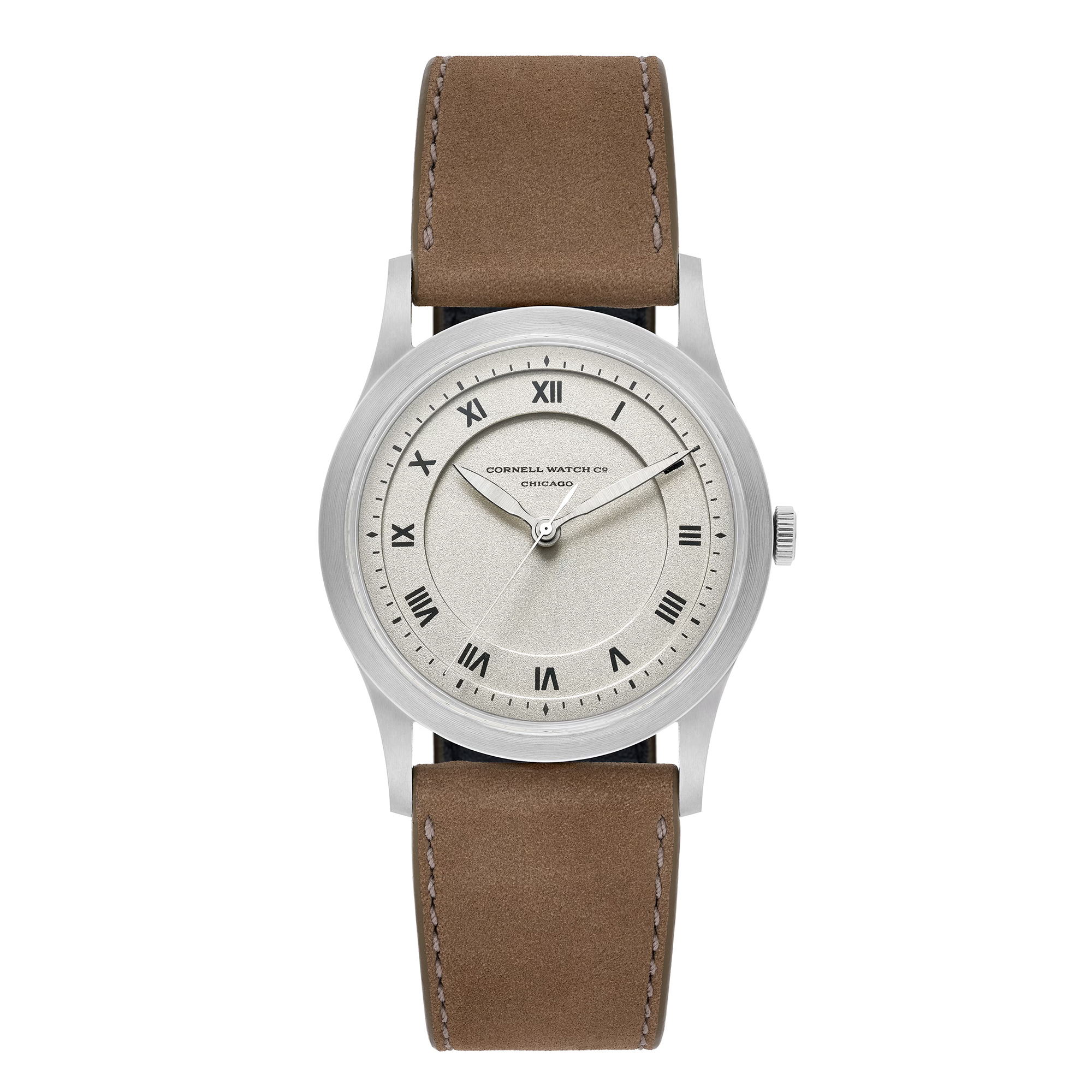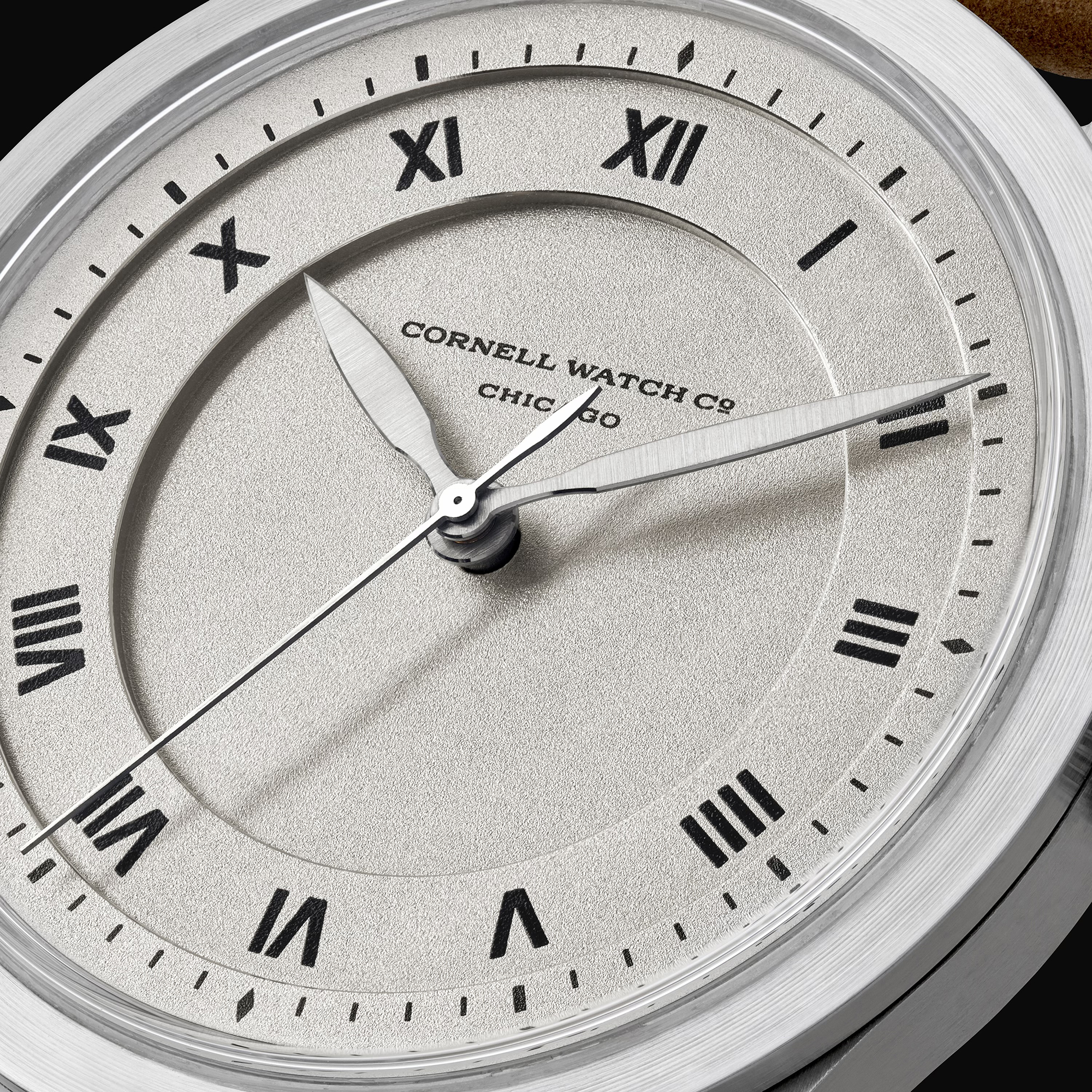
Lozier
Power reserve: 56 h, 28800 vph
The Watch
The Lozier is a study in subtlety. The modestly-sized stainless steel case measures 37.4mm across and just 8.5mm thick, including the crystal. It utilizes a classic three-piece construction, with matte brushed finishes on the tops and sides and a clean circular-brushed caseback free of any superfluous engravings. It has long, wide-set lugs (22mm apart) that recall the profile of some of the most classic dress watches of the 1930s and ‘40s. It is finished with a crown bearing a laser-etched Cornell logo.
Both the dial and custom-designed “Cornell Leaf” hands are made from German silver, giving them a warm, subtle two-tone look against the steel case. The dial is milled from a single block of German silver with three tiers that descend from the outer chapter ring to the hour markers to the central section with the Cornell signature. It is diamond-cut and hand finished, with the frosted finish punctuated by the brightly polished edges. The “Chicago Roman” numerals were designed specifically for the Lozier by Samuel Baker and are inspired by the city’s incredible Art Deco architecture. The numerals, chapter ring, and signature are all pad printed in dark black ink that allows just a hint of the underlying dial texture to show through, giving the watch a more harmonious look overall.
The complementary “Cornell Leaf” hands were also specially designed for this watch. The hour and minute hands are horizontally brushed by hand with diamond-cut edges, making the color appear a bit cooler than that of the dial. This helps with legibility and gives them added dimension, too. The counterweight on the slim central seconds hand also nods to Cornell’s signature fleur-de-lis. Floating over top of the dial and hands is a box-shaped sapphire crystal that offers the look of a vintage acrylic crystal but with the durability and optical clarity of something modern.
Careful attention has been paid to each surface and edge, with the textures and finishes subtly playing off one another. The Lozier is essentially monochromatic and utilizes just two materials – stainless steel and German silver – but the combination of precision machining and hand finishing gives the watch tremendous visual depth on the wrist.
Powering the Lozier is a Sellita SW-300-1 b movement, which is made and assembled in Switzerland. This movement provides automatic winding, a 56-hour power reserve, and a stop-seconds function, all in a package just 3.6mm thick. We also opted for the higher- end “Elaboré” version of this movement, meaning it is adjusted in three positions for better timekeeping. Utilizing a well-known caliber like this also makes it easier and less costly for owners to keep their watches performing at their best over the long-haul. All of this is housed behind a solid stainless steel case back, perfect for a personal engraving. The watch is finished with a dark taupe nubuck leather strap by Veblenist, another Chicago-based company. The color brings out the warmth of the dial and is secured with a special Cornell-signed buckle made of stainless steel.
The Process
It is important to CEO John Warren that the way Cornell makes watches – in addition to the watches themselves – honors the company’s original vision and ethos. With this in mind, Cornell is dedicated to working with the best possible partners for each component of the watch and to deliver an incredible product that presents lasting value to its customers, too.
In many cases, this meant designing and manufacturing close to home in the United States. Technical design work for the Lozier was done by Alex Voss Design Studio in Santa Clara, California, and the case, crown, dial, and hands are all manufactured on Kern 5-Axis CNC machines by Swiss-trained watchmakers and machinists at Hour Precision in Columbus, Ohio. “In the United States, only a handful of micro-machining shops have the same machines used by premier Swiss watchmakers,” says Warren. “We are thrilled to partner with Hour Precision to deliver Swiss-level component manufacturing right here in the U.S.”
While keeping design and production close to home is costly, it allows Warren to be extremely hands-on and to ensure that each element of the watch is as high-quality and as close to the original vision as possible. It also builds a domestic supply chain and domestic know-how that can be utilized for other creations down the road, both delivering a fantastic watch now and creating a stronger foundation for the future. “The challenge in developing the Lozier was creating scalable manufacturing processes that, up until this point, did not exist in the United States,” continues Warren. “We looked to Swiss and German watchmaking, while incorporating all we know about US micro-machining in parallel industries, and we experimented and prototyped until we achieved the quality required to compete on the global stage.”
Ultimately though, Cornell’s goal with the Lozier is to create the best watch possible. This means some components, such as the sapphire crystal, come from a bit further afield (Tokyo, Japan) because that is where the right partner is located who can deliver the highest quality component. Likewise, utilizing a Swiss Made Sellita movement allows Cornell to create a precise, reliable watch that can be serviced easily by nearly any competent watchmaker anywhere in the world.
Justin Harrell and Sergio Berrios, CW21 and WOSTEP trained watchmakers, as well as owners of The Watchmaker’s Shop in Asheville, North Carolina, provide final quality control on U.S.-manufactured components, and then regulate and assemble each Lozier.



